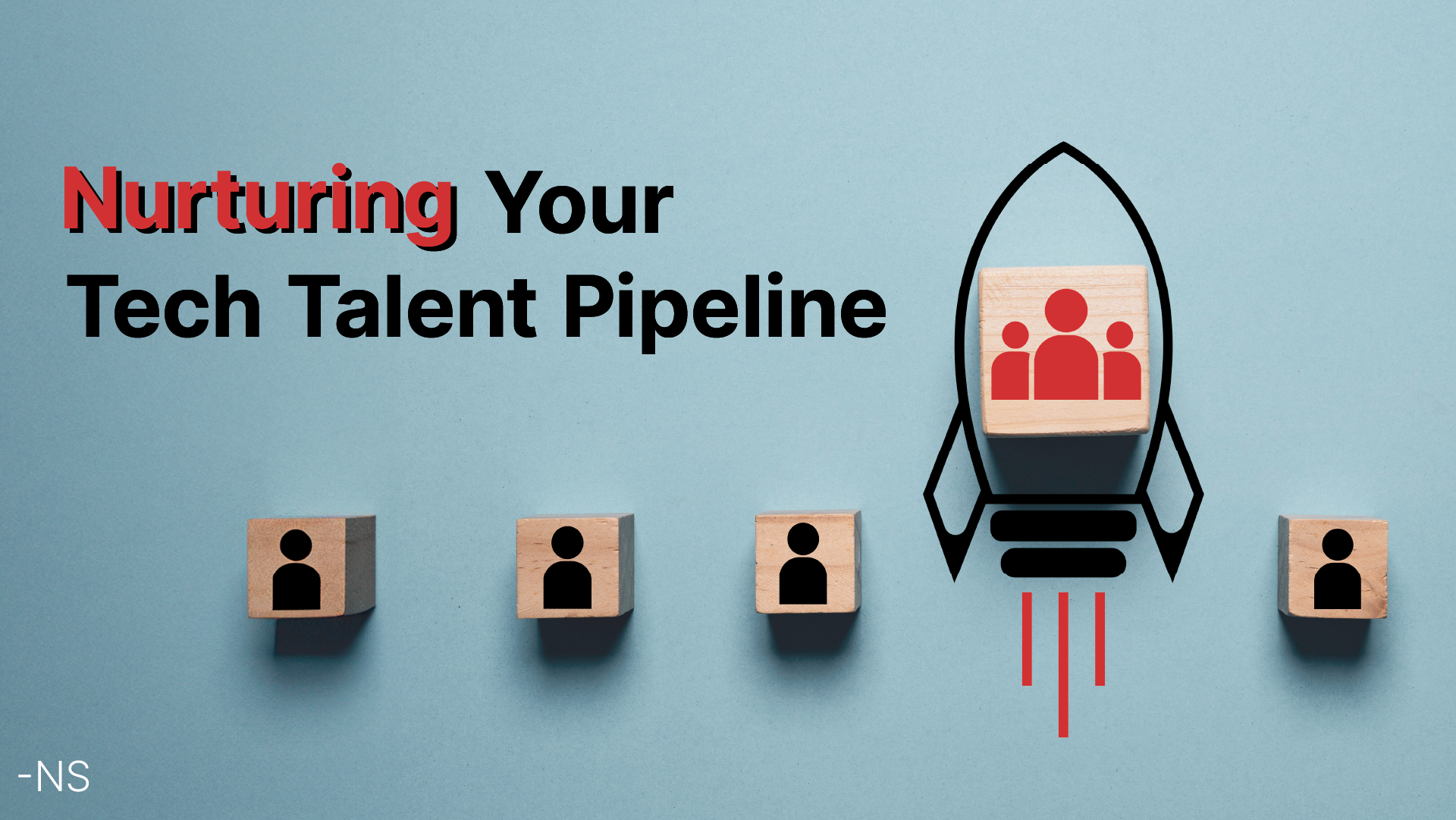There’s an old truism called the Pareto principle (aka the 80/20 rule, the law of the vital few, etc.) that gets broadly applied all over the workplace. One example I hear a lot is that 20% of a company’s employees actually do 80% of the work.
Is this true? Not so easy to say.
I prefer it this way: it’s hard to overstate the value of your top performers, especially in tech. McKinsey has tried, estimating that, for information and interaction–heavy work (ala information-intense management and software developers), the high performers are a stunning 800% more productive than average performers in the same role!
It’s no wonder, then, that regardless of the labor market, these workers remain so very valuable, especially in a world where just finding people with both the right skills and motivation can be so tricky.
I want to look at ways for nurturing this kind of tech talent at your organization, as well as maintaining the outside relationships and reputation that can keep your own pipeline both well-stocked and flowing smoothly.
Chart Your Course and Find the Gaps
I’ve written before about the accelerating pace of skill changeover—the Harvard Business Review article Reskilling in the Age of AI estimates that even before ChatGPT, one billion people globally need reskilling for automation and that the current pace of tech skill changeover is 2.5 years on average.
Which is to say, this is not a static endeavor. Skills and gaps are constantly shifting, but you can’t do anything about it if you can’t compare what you need to what you have.
Step one is identifying what you have now. This may sound easy, but in practice it is quite challenging. Traditionally, these kinds of evaluations were extremely manual: for each position, it meant identifying the skills needed (requiring research, interaction, and contact with subject matter experts for each). Once these skills were in hand, they could then be checked against the workforce, an excruciatingly subjective process, and one tripped up by even simple issues like variations in skill naming.
Given the cost and inconsistency, this kind of gap analysis is deemed a luxury, or something to be done as infrequently as possible.
But having a great talent pipeline begins with knowledge, and here AI is already a game-changer. AI excels at processing vast amounts of data at pace, allowing far more practical and standardized assessments, synthesizing: job descriptions and training materials, past employee performance data, and up-to-date skill assessments.
With the capacity for greater personalization, learning interventions can also be far more easily proposed for each individual.
For a great example of this in action, consider this Johnson & Johnson case study from the MIT Center for Information Systems Research. They use a three-step process:
- Define skills they need.
- Gather skills evidence from current data (including HR system, recruitment database, learning management system).
- Conduct ongoing skills assessment, using their specially trained machine learning model.
With this data in hand, upskilling employees becomes not only more feasible but directly actionable, integrated into a culture of ongoing talent development.
Mentorships Can Be Powerful
What we’ve been discussing is incorporating technology and evaluations to help you understand where you are and what you need in skills. But this can be a highly impersonal process, quantifying individuals to a variety of datapoints.
Good mentorship in technology careers helps balance this with humanity. Mentoring programs are increasingly listed as important to the younger workers (Millennials and Gen-Z) who make up ever more of the workforce.
Long a staple of onboarding for key tech roles, mentoring can sometimes be seen as inefficient and awkward for ongoing employees. But we are seeing AI technology harnessed here, too, both to better pair up mentors and mentees and to measure the actual results you’re getting.
In addition to traditional mentorships (senior pros with less experienced newcomers), I encourage leaders to consider the benefits of reverse mentorship in tech, especially in this time of breakout innovation. Younger employees are far more likely to regularly use AI in both their work and personal lives, and they can share this experience directly with more senior positions.
Consider empowering your junior developers, for example, to run workshops on AI coding innovations they’ve used or learned in recent training or school programs. In this way, you can seize on the strengths that both offer: experience and wisdom on one hand and potentially more current learning and skills development on the other.
In addition to knowledge transfer, such relationships can break down traditional barriers, improve diversity and inclusion in tech, and increase engagement and thus retention.
Progression is Key to the Pipeline
McKinsey points to skills development, with the chance to then use those skills, as a key component of strong employee retention in tech. Reskilling employees alone is not enough: they must have the chance to progress and impact the work directly.
This means incorporating systems that recognize strong performance and are also built on accountability. Stagnation disrupts any pipeline, and in your tech workforce it can mean losing your top performers to bigger and brighter opportunities, where they believe their accomplishments will be recognized (and rewarded).
A PODs approach, which I’ve written about previously, is one example of a team structure that helps break down traditional bureaucratic barriers which can hold back innovation, giving a greater sense of direct ownership. Freed from hierarchical restraints, top performers can see their ideas put to work more quickly and easily.
The feeling of perpetual growth can be transformative, and it comes with the understanding of the necessity of continuous learning in tech today. Google’s 20% Time Policy is a widely discussed example of this, reportedly introduced by their co-founders and enabling workers to spend 20% of their time on work that interests them but may also be outside their primary job description.
As Google’s current Director of Cloud Consulting Andy Milo writes, the truth of the program is more nuanced, and today is more about company culture than some standardized rule. He cites the following as being at the core of this practice:
- Innovation is Everyone’s Job: Regardless of level or department, everyone is expected to share ideas and improvements.
- Small Teams, Big Impact: Like a PODs approach, focused teams get ownership of projects and drive them to completion.
- Fail Fast, Learn Faster: Experiment and iterate rapidly, he writes, favoring action and learning over rigid planning.
- Think 10x, Not 10%: Encouraging innovation, this is the difference between tweaking existing designs and building whole new, better ones.
- The User is Everything: Understand users as deeply as possible and you will solve real world problems.
Much of this is Agile in action, reinforcing a methodology that favors working products, interactions, collaboration, and change over static, linear approaches. And when coupled with recognition and a technology career progression for those that embrace these challenges, it can also mean growing your own talent ecosystem.
Outside Forces
I’ve been focusing on things you can do in-house, but yes, talent will need to come in from the outside, either for the short-term or the long-term. To this end, I embrace tech talent recruitment from a broad array of sources, including:
- Internships and Apprenticeships: Not only can these programs give back to your local community, but they can also be a means of finding great talent. You must use them in meaningful ways, giving valuable experience that can also allow for honest assessments of their skills-capacity and fit. Where merited, you should have ready conversion pathways to full-time, saving on the costs of hiring and jumpstarting onboarding.
- Relationships with Educational Institutions: Long the backbone for scouting tech talent, universities are losing some importance of late with reduced enrollments and a move to skills-based hiring. But alongside other training programs like coding bootcamps, they continue to connect you to emerging talent and can also offer the benefits of insight on emerging tech through academic research.
- Leveraging Social Media for Tech Hiring: Platforms like LinkedIn and GitHub are positive venues not only to display your brand, products, and culture, but also for your employees to share their experiences with others in a way that’s increasingly important for new hires. How your current workers act and what they say may mean more than what you do.
- Engage With the Tech Community: As always, being an industry and thought leader means being connected to new work and ongoing research, be it through online forums, open-source projects, leading tech journals, or industry conferences. Membership in relevant associations not only provides valuable resources but also integral networking.
- Work with Great Partners: In the end, you can trust the experts to know how to find the best talent. With decades of experience and long-term partnerships, consultants and quality recruiters are an essential part of any full pipeline. Give PTP a look if you haven’t already, to see what we can do first-hand to help you get your tech talent machine thriving!
Conclusion
Do 20% of your people do 80% of the work? Maybe not. But there’s no doubting the outsize contributions of skilled, motivated professionals in making your organization sing.
Today, having a flourishing tech talent pipeline isn’t only for the Googles and Microsofts of the world. With technology increasingly integral to all organizations, nurturing your talent from within as well as finding the best from outside is a shrewd approach for everyone, worldwide.
Talent isn’t simply hired and put to work to do a job—it’s nurtured, developed, retained, reskilled, encouraged, fairly evaluated, and empowered.
References
Increasing your return on talent: The moves and metrics that matter, McKinsey & Company
Reskilling in the Age of AI, Harvard Business Review
The State of Coaching and Mentoring 2023: Prepare today’s workforce for future challenges, HR Research Institute





